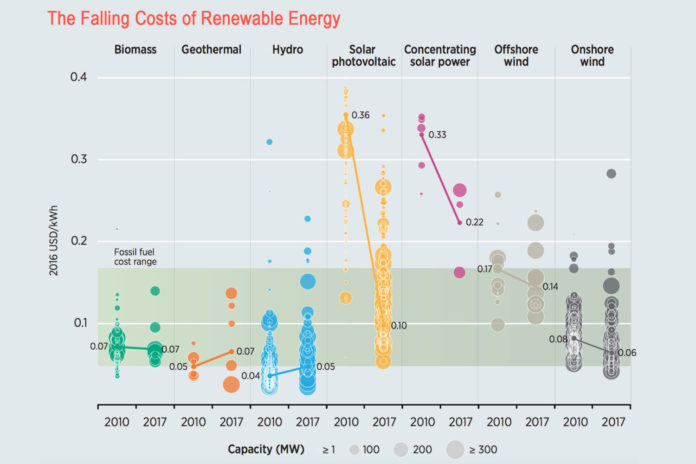
Welcome to “Fridays with Scott” segment of the Climate Change program.
One of the most promising development is that economics of clean energy is making it more compelling to switch. The major reason that power producers switched from dirty coal to natural gas in recent years is because of economics — the cost of natural gas has become cheaper than coal.
According to the U.S. Energy Information Administration or EIA, they forecasts that natural gas will remain the primary source of U.S. electricity generation for at least the next two years. The share of total electricity supplied by natural gas-fired power plants is expected to average 33 percent in 2018, 34 percent in 2019, up from 32 percent in 2017. The shift from coal to natural gas is in response to changes in fuel costs and the development of renewable energy technologies. Since 2015, the cost of natural gas delivered to electric generators has generally averaged $3.50 per million British thermal units or Btu. The average cost of natural gas delivered to generators in 2018 fell by 2 percent while the delivered cost of coal rose by 5 percent. Power plant operators brought online about 20 GW of new natural gas-fired generating capacity in 2018. In contrast, about 13 GW of coal-fired capacity was retired in 2018.
Similarly, the key to switching from fossil fuels to clean energy will almost solely depend on the economics — how quickly we can utilize new technologies to bring down the cost of solar PV, wind farms to compete against coal and natural gas.
Rapid renewable energy cost declines have made clean energy one of the cheapest source of new electricity generation in many regions of the U.S. Recently, Xcel Energy received more bids for renewables, with more variety, for much cheaper. Wind and solar plants paired with storage are bidding in cheaper than the ongoing operating costs of existing coal plants. Renewables are even giving natural gas a run for its money.
Renewables were the most-added source of new generation in recent years – about 11 GW of new wind and utility-scale solar capacity surpassed even natural gas – marking the fourth consecutive year renewables made up more than half of total U.S. generation additions.
Internationally, the costs of renewables continue to plummet. Morocco, Mexico, Chile and Egypt are now producing solar energy for less than $0.03 per kilowatt hour. That’s cheaper than natural gas.
More than 50 percent of new electricity generating capacity being installed is green. Wind and solar are doubling every four years. Coal is going backwards in most of the developed world.
The message is clear. We can rally, protest and demand legislation to fight climate change but real substantive change will only take off on a large-scale when the initial and ongoing cost structure of clean energy becomes sustainability cheaper than coal and natural gas.
Stay tuned next Friday as I explore current clean energy technologies and what’s needed to bring down the cost of production.

















